MARKET OVERVIEW
The global elevator traction machine market is an important market under the elevator industry and has several developments to witness in the next few years. It focuses on the production and sales of traction machines built for elevators, which has turned into one of the critical components of vertical transportation in any building across the world.
The elevator traction machine makes possible the functionality and efficiency of elevator systems. They supply motion to elevators by pulling the elevator car through a system of ropes and counterweights. This makes certain that the persons or merchandise within the elevator move with ease and reliability from one floor to another in any building type, from a residence up to the highest skyscrapers.
For the last years, technological changes have been the driving force behind innovation in elevator traction machines. Increasingly, more emphasis has been laid on the part of manufacturers to improve the energy efficiency, reliability, and safety features of the machines. Future trends point to more compact designs, which, aided by advanced materials and digital technologies, will optimize performance with a reduced environmental impact.
The global elevator traction machine market provides competition from a quite diversified group of players. Multinational corporations are competing with independent manufacturers who specialize in elevator systems and components. Companies not only compete based on the parameters of the quality and innovativeness of their products but also on others such as cost competitiveness and service offerings. These are supported by trends in urbanization, construction activities, and regulatory standards for building safety and energy efficiency.
Looking ahead, several major trends are about to shape the future of the global elevator traction machine market. Urbanization in developing economies and continuous urban redevelopment works in mature markets will drive demand. Technology bodes well, as operational efficiency and reliability increase with the adoption of IoT and predictive maintenance systems.
Moreover, the role of environmental sustainability in shaping the market condition would further increase over the years. Manufacturers will have a greater inclination toward developing eco-friendly solutions to reduce energy consumption and carbon emission in elevator operations. This move is in line with other trends in the industry toward more sustainable building practices and their related regulatory environments, which encourage low-emission technologies.
The Global Elevator Traction Machine market is progressing toward strong growth in the near future. With the continuous development in technology and urbanization, demands for efficient, safe, and eco-friendly elevator systems will drive innovation and growth in this crucial industrial sector. The manufacturers and other stakeholders are getting ready to exploit these opportunities so that elevator traction machines can retain their present decisive role in modern urban infrastructure globally.
Global Elevator Traction Machine market is estimated to reach $4,431.7 Million by 2031; growing at a CAGR of 3.6% from 2024 to 2031.
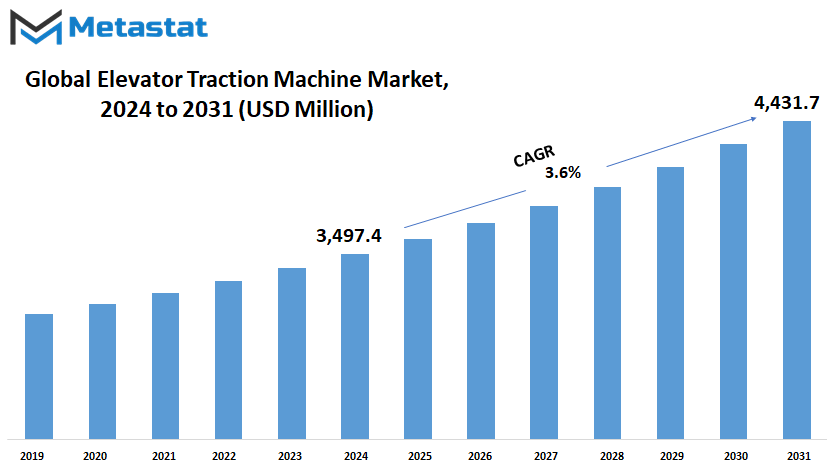
GROWTH FACTORS
The global elevator traction machine market is likely to grow significantly in the near future. Rising urbanization is leading to an increased number of high-rise buildings, which directly increases the demand for advanced elevator systems. Technological advancements result in more efficient and compact traction machines, which are vital in the smooth operation of elevators across tall structures.
Elevators are essential because urbanization implies the need for efficient vertical transportation. The trend is toward high-rise buildings in the heart of urban centers worldwide; as such, this demands reliable and efficient elevator systems. Therefore, the demand for elevator traction machines will directly link with these construction trends, pushing the market forward.
Advancing technology has made elevator traction machines more efficient and compact. Clearly, these innovations save space, but they have also improved energy efficiency in light of the increasing pressure for more sustainable buildings. These innovations of modern traction machines are more durable and less maintenance-heavy, enhancing their appeal.
Of course, challenging issues do exist in the market. The regulatory compliance and the safety standards are increasingly strict. That means greater complexity and cost for designing and installing a traction machine. Actually, making elevators compliant has been a huge challenge for manufacturers and often acts like a drag on their innovation and quick time-to-market for new products.
Another major challenge is the high initial investment cost. Advanced elevator systems require huge financial investments in development and installation, hence acting as a major hindrance for both elevator manufacturing and building developing companies. The high cost might slow down the growth of the market, as smaller companies may not have the financial capacity for such advanced systems.
The integration of IoT and predictive maintenance technologies also opens up some exciting opportunities, though the road ahead will be replete with technical challenges. IoT can bring improved performance and reliability to elevator traction machines with its real-time monitoring and analysis capabilities. Predictive maintenance may significantly reduce downtime and associated maintenance costs of building owners by detecting problems before they become major ones. This not only makes elevator systems more efficient but also prolongs their life, which is very cost-effective in the long term.
While it will face a few headwinds coming from regulatory constraints and cost pressures, potential improved efficiency and reduced maintenance costs that come with IoT integration provides a strong case for growth in the global elevator traction machine market as technological advances and further urbanization continue to spur growth. As cities continue to grow and evolve, so will the demand for next-generation elevator systems to ensure reliability, efficiency, and safety—thereby further propelling innovation and growth in the elevator traction machine market.
MARKET SEGMENTATION
By Type
This will eventually lead to the exponential growth of the global elevator traction machines market during the forecast period. Due to rapid urbanization and the subsequent construction of high-rise buildings, there will be an increasing requirement for efficient vertical transportation facilities. By type, this market is further categorized into geared machines and gearless machines. Both types have their advantages and range of applications in the construction and infrastructure sectors.
Geared elevator traction machines are applied for buildings of middle rise. They are very reliable and less expensive. Such machines function due to a gearbox that decreases the speed of a motor, increasing torque. That makes these machines applicable only in buildings, which do not exceed some limitations of height. Making them quite suitable for developing horizontal, urban spaces without requiring comprehensive, serviced modifications of buildings with geared machines catering to efficient vertical transportation.
On the other hand, the gearless elevator traction machines are gaining wide acceptance, particularly for high-rise buildings. These machines do not use a gearbox; therefore, their application is smoother and more silent. Gearless machines are more energy-efficient and require less maintenance, thus finding favor in modern constructions. The advancements in technology have allowed the gearless machine to support higher loads and higher travel speeds to support skyscrapers and other tall buildings.
Long-term, the global elevator traction machine market will be driven by innovations and technological advancements. Further improvements in efficiency and safety can be expected from smart systems and IoT integration into elevator systems. Smart elevators with predictive maintenance shall reduce downtime and operational costs. Besides, eco-friendly materials and energy-efficient designs will serve the goals of modern urban developments in terms of sustainability.
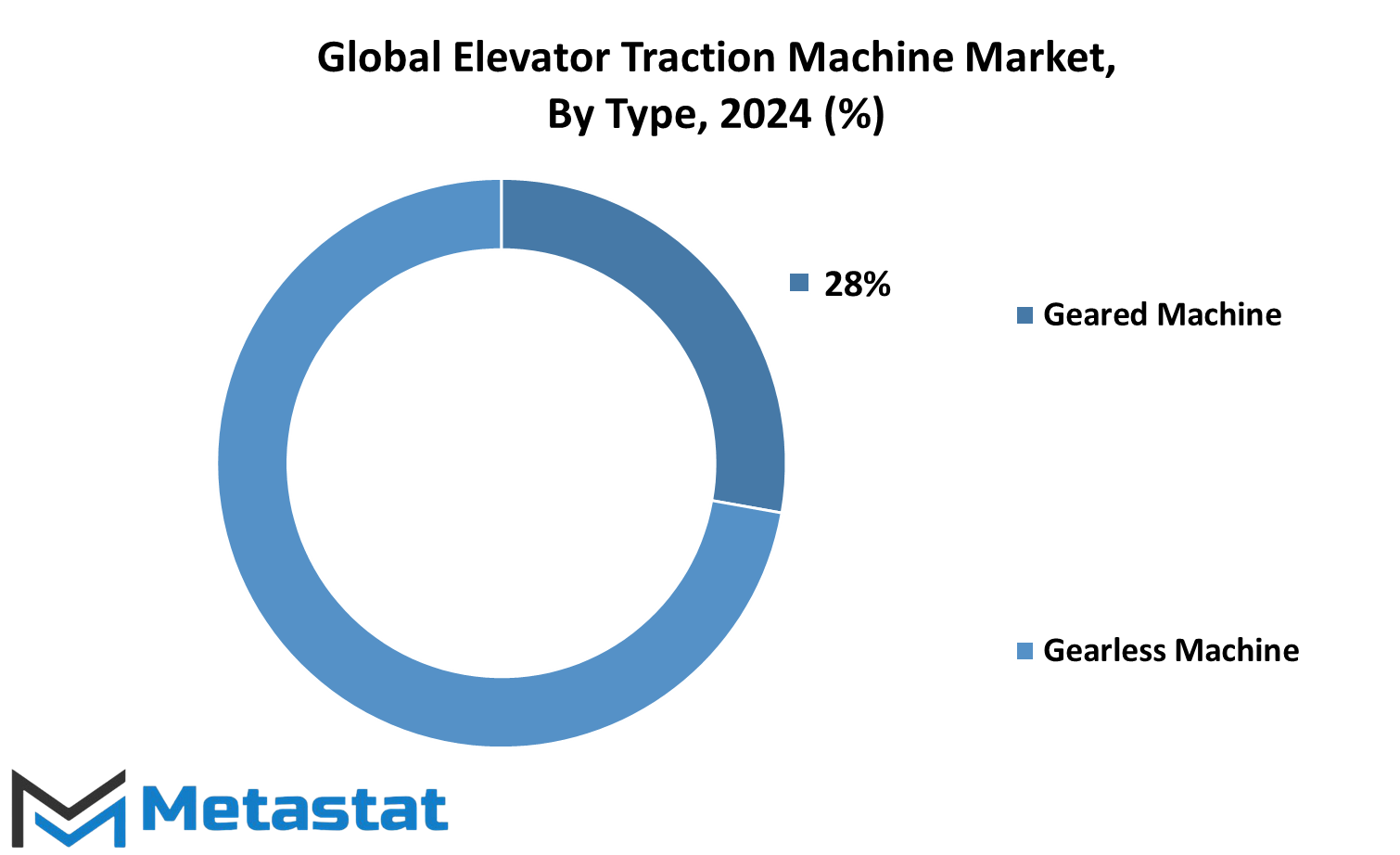
By Application
The global elevator traction machine market is on the rise, buoyed by surging demand from a variety of sectors. This demand for efficient and reliable vertical transportation solutions has never been more important than with increasing urbanization. It cuts across multiple applications, from shopping malls and office buildings to public places, among others, further boosting the market.
Elevator traction machines are significant in malls, as they improve the shopping experience. Moving along vertical transportation has been efficient with the growing size and complexity of shopping malls. The shopper wants fast and easy access to the floors, and state-of-the-art elevator systems equipped with the latest traction machines do just that. These machines offer speed, silence, and energy efficiency—precisely what a mall developer looking to attain customer satisfaction would want.
Another area where elevator traction machines find their application is in office buildings. The need for reliable and efficient elevators cannot be overemphasized as businesses grow and move into taller structures. Present workplaces require systems that can take up large volumes of traffic, especially during peak hours of the modern working environment. Elevator Traction Machines are designed to provide a smooth ride and minimize wait time, enhancing the overall productivity of the workplace. Besides, smart technologies integrated into these machines provide predictive maintenance and real-time monitoring, ensuring close to zero downtime and high efficiency. Growing requirements from public places such as hospitals, airports, and educational institutions also add to the increasing demand for elevator traction machines.
The requirement in these places is characterized by speed and reliability in vertical transportation. For example, in hospitals, elevators should move perfectly to facilitate speed in serving patients and staff moving within the building. At the same time, airports need systems that shall deal with the high number of passengers, along with their respective luggage, while schools need elevators that can facilitate easy movement to different facilities across the large compound.
The improved and reliable nature of modern elevator traction machines makes them best suited for these applications. Other applications of elevator traction machines include residential buildings, hotels, and industrial facilities. In residential buildings, especially high-rise ones, these machines ensure that residents are able to move quickly yet safely from one floor to another. It will help hotels have efficient elevator systems so as to enhance the guests' experience through the reduction of waiting periods and a smooth ride. On the other hand, industrial facilities require heavy-duty and long-lasting elevator systems that can move heavy loads frequently..
REGIONAL ANALYSIS
With increasing urbanization and technology, the global Elevator Traction Machine market is bound to register considerable growth. This report is an overview of the elevator traction machines market by geography, which is different in development patterns in various regions, all of which contribute uniquely to the overall expansion.
The North American market is highly driven by the United States, Canada, and Mexico. The US has substantial spending on infrastructure modernization and smart city projects. Other minor contributors but existing ones are Canada and Mexico, which have an emerging requirement for high-rise buildings and commercial spaces. Such factors drive the demand for advanced elevator traction machines in terms of efficiency and reliability.
In Europe, the dominant countries are the UK, Germany, France, and Italy. The UK has a robust market, which is the result of high-level construction activity coupled with an increasing demand for energy-efficient solutions. Added to this is the engineering excellence of Germany and the infrastructural works in progress within France. Renovation in existing buildings and new infrastructure build continue to press on with their growth momentum in Italy and other parts of Europe. This makes sustainable and energy-efficient buildings highly relevant, therefore so are advanced elevator traction machines. The major growth contributors in this sector would be the Asia-pacific region, driven mainly by rapid urbanization in India, China, Japan, and South Korea.
The regional market is led by China due to its huge urban population and mega construction projects in process. India follows with considerable smart city development and infrastructure creation impetus. Advanced countries, such as Japan and South Korea, contribute through innovations in elevator technology and a strong emphasis on safety and efficiency, while other Asian-Pacific countries add to the growth through increasing urban development and infrastructure investments. South America is expected to become a growing market for elevator traction machines, driven primarily by Brazil and Argentina.
The construction boom in Brazil and the urban development projects in Argentina further increase the demand for efficient elevator systems. Other South American countries also offer potential as infrastructure development continues to gain momentum across the region. Key players in the Middle East & Africa include GCC countries, Egypt, and South Africa. The GCC countries alone have been powering the demand for advanced Elevator Traction Machines due to ambitious construction projects and skyscraper developments. Urban expansion in Egypt and infrastructure initiatives in South Africa further supplement the growth of the market. The remaining countries of Middle East & Africa are quite varied at different stages of development but still a fertile field in the prospect of urbanization and related construction activities.
The elevator traction machine market grew strongly in all regions. From the regional factors—urbanization and infrastructure projects—to technological advancement and sustainability efforts, it is powered by all. With continuous innovation and rising demand for efficient and reliable elevator systems, future prospects do look promising.
COMPETITIVE PLAYERS
The global Elevator Traction Machine market is poised to see huge growth in the forecast years due to urbanization and technical development. This market involves companies specifically engaged in producing machinery that makes elevators run smoothly around the world. Some of the main players operating in this industry include Otis, Xizi Forvorda, Suzhou Torin, Suzhou Dengdao, Kone, Kinetek, Shenyang Bluelight, Hitachi, Mitsubishi Electric, Yaskawa, Thyssenkrupp Elevator AG, Ningbo Xinda Elevator Traction Technology Co., Ltd., Fujitec Co., Ltd., Toshiba Corporation, Hyundai Elevator Co., Ltd., Wittur Holding GmbH, Ningbo Xinda Group Co., Ltd., SJEC Corporation, and Fuji Industrial Co., Ltd.
With the growth of cities and the coming up of high-rise building structures, the demand for elevators will increase. The trends mentioned drive innovative elevator traction machines, which can take up heavier loads while ensuring passenger safety. Companies have already started investing in research and development to bring about more energy-efficient and eco-friendly products.
One major trend influencing the global Elevator Traction Machine market is the integration of smart technologies, such as the use of IoT devices and artificial intelligence for the betterment of performance and maintenance of elevator systems. Smart elevators use predictive maintenance, hence reducing downtime and increasing safety. For instance, AI-driven diagnostics can identify issues with a system that will turn out to be huge problems down the road before they become huge, allowing for proactive maintenance.
Another critical feature is its sustainability. With environmental awareness at an all-time high, companies are trying to make eco-friendly elevator traction machines. Such machines try to reduce energy consumption and lower carbon emissions to be more in line with global sustainability goals. The introduction of regenerative drives capable of feeding the energy back into the building's power grid sets the example for this green initiative.
The elevator traction machine market is characterized by collaborations and partnerships. Companies partner to pool resources and capabilities, spur innovation, and expand their market presence. For example, the collaboration of technology companies with elevator manufacturers results in more advanced and efficient elevator systems.
The continuous growth in the global Elevator Traction Machine market in the future will be set by technological innovations and demands for sustainable solutions. Companies engaged in the manufacturing of elevators that can meet these challenges have a good position to respond to the challenges and grasp the opportunities presented by this changing urban landscape. They will not only define the future of vertical transportation but are also at the forefront in terms of improving elevator technology through smart and sustainable practices. Not only is the global Elevator Traction Machine market growing but is in the process of evolving also, impelled by innovation and efficiency.
Elevator Traction Machine Market Key Segments:
By Type
- Geared Machine
- Gearless Machine
By Application
- Mall
- Office Building
- Public Places
- Other
Key Global Elevator Traction Machine Industry Players
- Otis
- Xizi Forvorda
- Suzhou Torin
- Suzhou Dengdao
- Kone
- Kinetek
- Shenyang Bluelight
- Hitachi
- Mitsubishi Electric
- Yaskawa
- Thyssenkrupp Elevator AG
- Ningbo Xinda Elevator Traction Technology Co.
- Fujitec Co., Ltd.
- Toshiba Corporation
- Hyundai Elevator Co., Ltd.
WHAT REPORT PROVIDES
- Full in-depth analysis of the parent Industry
- Important changes in market and its dynamics
- Segmentation details of the market
- Former, on-going, and projected market analysis in terms of volume and value
- Assessment of niche industry developments
- Market share analysis
- Key strategies of major players
- Emerging segments and regional growth potential



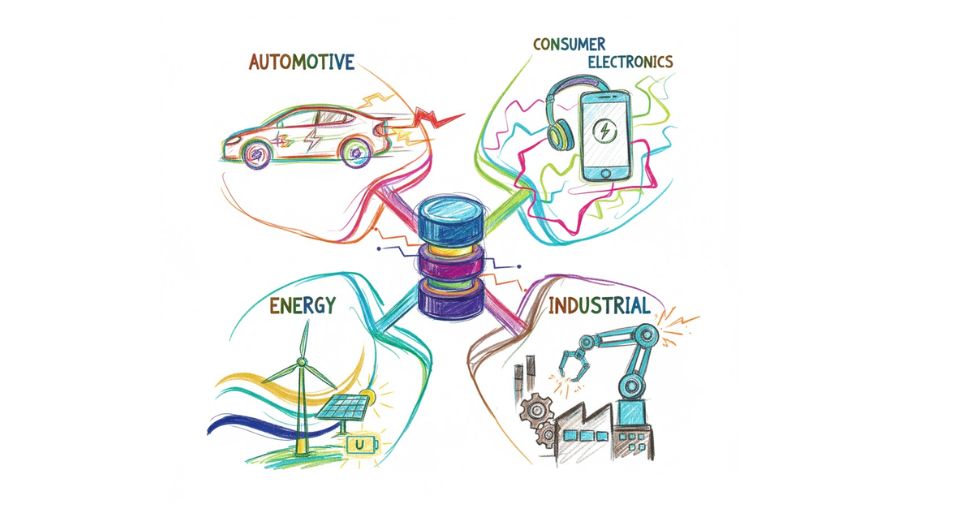

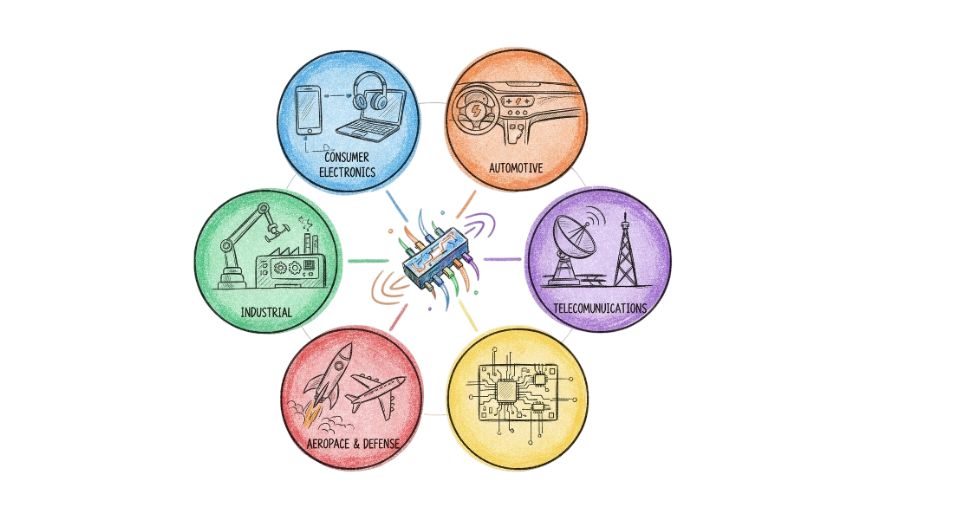
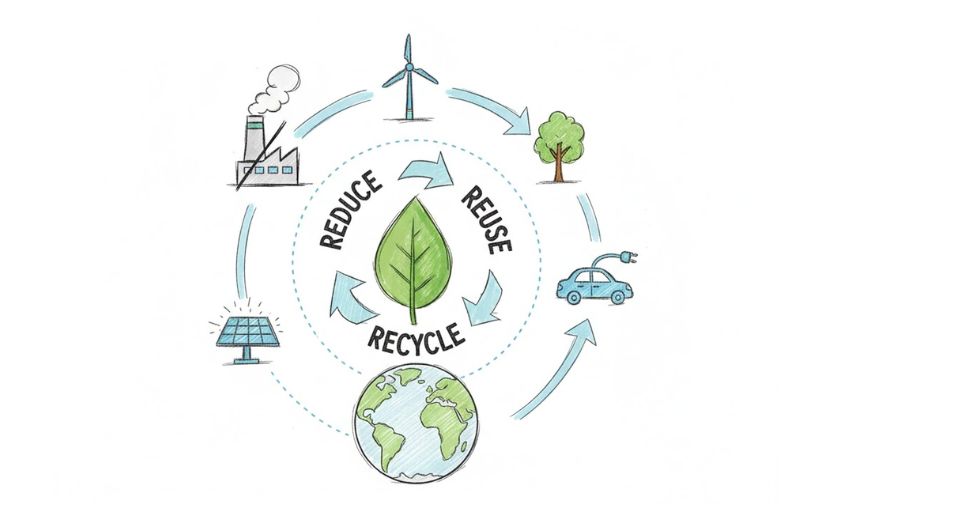

 US: +1 3023308252
US: +1 3023308252






